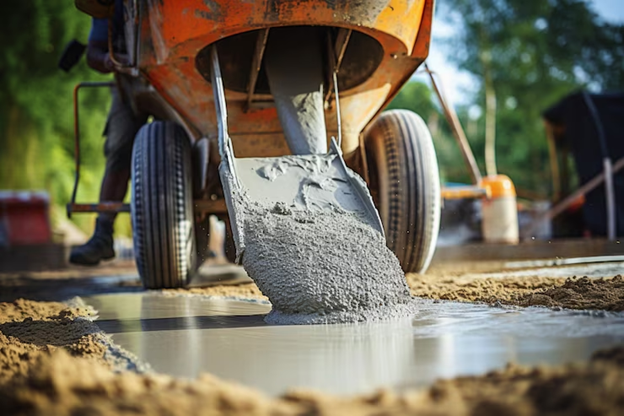Concrete is the cornerstone of modern construction, a ubiquitous material shaping our built environment. From towering skyscrapers to sturdy bridges and suburban homes, concrete’s versatility, durability, and affordability make it an essential element. This article explores the multifaceted role of concrete in modern construction, highlighting its advantages and ongoing innovations.
The Mighty Mix: Understanding Concrete’s Composition
Concrete is a composite material. Here’s a breakdown of its key components:
- Cement: The binding agent that holds everything together. When mixed with water, cement undergoes a chemical reaction that hardens the concrete.
- Aggregates: Coarse aggregates like gravel and crushed rock, and fine aggregates like sand, form the bulk of the concrete mix and provide strength and stability.
- Water: Water activates the cement and allows the concrete to be poured and molded.
The specific ratio of these components determines the final properties of the concrete, making it adaptable to various construction needs.
A Strength to Behold: The Advantages of Concrete Construction
Concrete offers several advantages that make it a preferred choice for modern construction:
- Durability: Concrete is incredibly strong and resistant to wear and tear, fire, and harsh weather conditions. This ensures long-lasting structures with minimal maintenance needs.
- Versatility: Concrete can be molded into virtually any shape, making it suitable for a wide range of construction projects, from intricate architectural designs to massive infrastructure projects.
- Affordability: Concrete is a relatively affordable building material, especially when compared to some alternatives. This makes it a cost-effective choice for large-scale projects.
- Sustainability: Concrete is primarily made from readily available natural materials. Additionally, advancements in ready mix concrete production minimize waste and optimize resource usage.
Beyond the Basics: Innovations in Concrete Technology
The world of concrete is constantly evolving, with advancements aiming to improve performance and sustainability:
- High-Performance Concrete: These concretes offer enhanced strength, self-healing properties, and faster curing times, leading to more efficient construction.
- Green Concrete: Innovations focus on using recycled materials in concrete mixes and reducing the carbon footprint of production.
- Self-Compacting Concrete: This type of concrete flows easily into molds, minimizing voids and improving construction efficiency.
- Pervious Concrete: This allows rainwater to permeate through, reducing stormwater runoff and promoting sustainable development.
Concrete vs. Asphalt: Choosing the Right Material
While concrete reigns supreme in many construction projects, asphalt serves a distinct purpose:
The asphalt paving: Asphalt is a flexible and cost-effective material ideal for paving roads, parking lots, and driveways. Its flexibility allows it to withstand ground movement and vibrations from traffic.
The choice between concrete and asphalt depends on the specific application. For structures requiring high strength and durability, concrete is the preferred option. For pavements needing flexibility and a smoother surface, asphalt is better suited.
Conclusion
Concrete’s enduring strength, versatility, and affordability make it an essential building block for modern construction. As advancements in concrete technology continue, we can expect even more sustainable and high-performance concrete solutions. So, the next time you marvel at a towering skyscraper or drive on a smooth road, remember the silent hero beneath it all – concrete, the foundation of our built environment.

